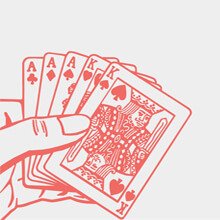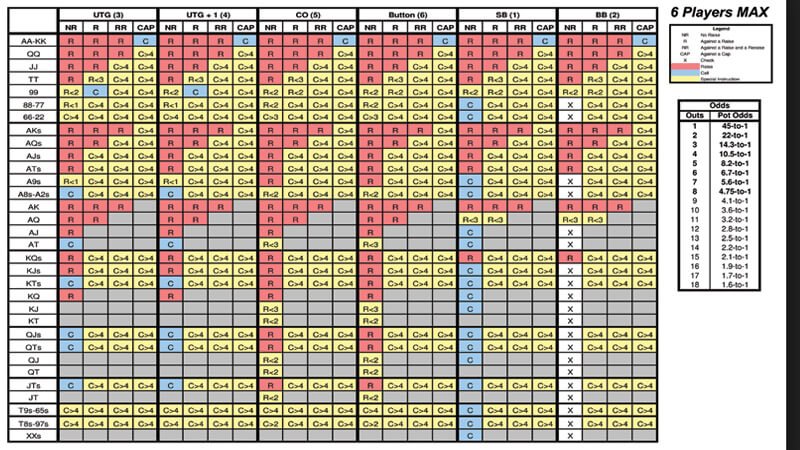
Pot Odds in No Limit Hold’Em
- A fundamental part of Hold’Em is knowing the pot odds
- Playing the odds will have long-term benefits that outweigh short-term luck
Pot Odds in No Limit Hold’Em are a fundamental part of the poker game, an understanding of this simple concept can lead to successful play, however many opponents will misunderstand and misuse the concept of pot odds. This article will show you the best way to use pot odds in No-Limit Texas Holdem poker and how to profit from this knowledge.
We will begin by explaining what pot odds in No Limit Hold’Em are and how to calculate them at the poker table, then explain how pot odds in No Limit Hold’Em need to be combined with an understanding of outs. Next some common misuses of pot odds in No Limit Hold’Em are covered with tips on how to avoid these errors yourself.
In their very simplest form pot odds can be likened to the odds you get when sports betting. In poker you will be offered a variety of odds to call a bet and also offer different odds to your opponent. For example with no cards to come and a pot totaling $45 you are the last to act, it will cost you just $5 to call the last bet so you are being offered pot odds if 9/1. Whether you call this last bet (assuming you decided not to raise) is determined by whether you think you will win the pot more than once in every 9 times that you call.
Pot odds are also used to assess whether to make a call with more cards to come. For example you hold 10-Jack and the flop comes 3-Queen-King. You feel that your opponent holds a king and nothing else and know that any Ace or 9 on the turn or river will make you the best hand. With 8 winning cards out of 47 unseen cards on the turn you are just over 4.3/1 to make the best hand. Your knowledge of outs can then be combined with the pot odds on offer. If the pot is offering you more than this price then your call will make money over time; if less you will lose money over time, whatever the outcome of the current hand.
The most basic mistake that opponents will make in No Limit Hold’Em is to call with draws to straights or flushes without the odds to do so. The bottom line is that, even if they get lucky once in a while, these players will not win in the game of No Limit Hold’Em poker for the long term. However, there is an important concept related to pot odds that needs to be taken into account. No Limit Texas Hold’Em is a game of deep stacks, that is the final pot can be many times the size of the bets before or on the flop. There is a chance that making your hand will win you an opponent’s entire stack; a big reward for taking a slightly negative expectation bet on the flop. These are known as implied odds, since you imply from your opponents play that you stand to win a big pot if you hit your hand.

Understanding Pot Odds and Implied Odds
Errors that opponents make with implied odds work in two directions. They often justify their opponent’s calls on the flop by paying off big bets when the flush card (for example) hits. They also bet small amounts with monster hands, thus giving an opponent with a drawing hand the correct (or close to correct) odds to chase.
You need to bear pot odds in mind when you are on the other side of the made-hand vs drawing hand battle. If you have a high pair and think your opponent has a straight draw (for example) then you want them to call a bet. Since offering them incorrect pot odds will bring you profit over time when they call, you should offer a price that is likely to keep them in the hand, at the same time as ensuring that the call is an error. In this example betting $50 into a $100 pot would offer your opponent 3/1, calling to make a straight would be incorrect as long as you do not pay off big bets when the straight card comes on the turn.
In summary, an understanding of pot odds is a vital skill in No Limit Texas Hold’Em. However due to ‘deep stacks’ in relation to the starting bets, implied odds concepts are even more important. Make sure you use this to your advantage by taking positive expectation bets based on the pot odds and implied odds being offered.